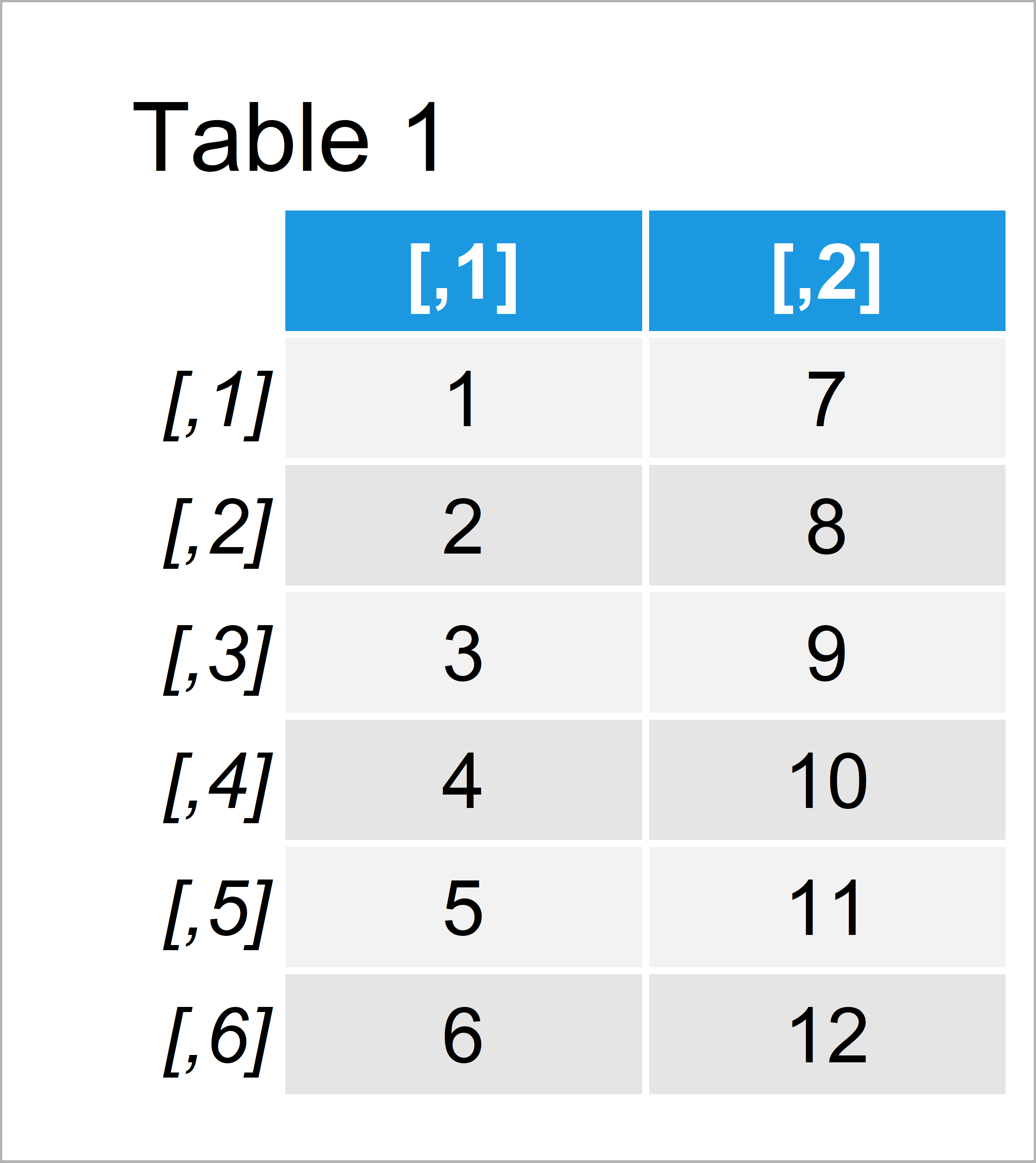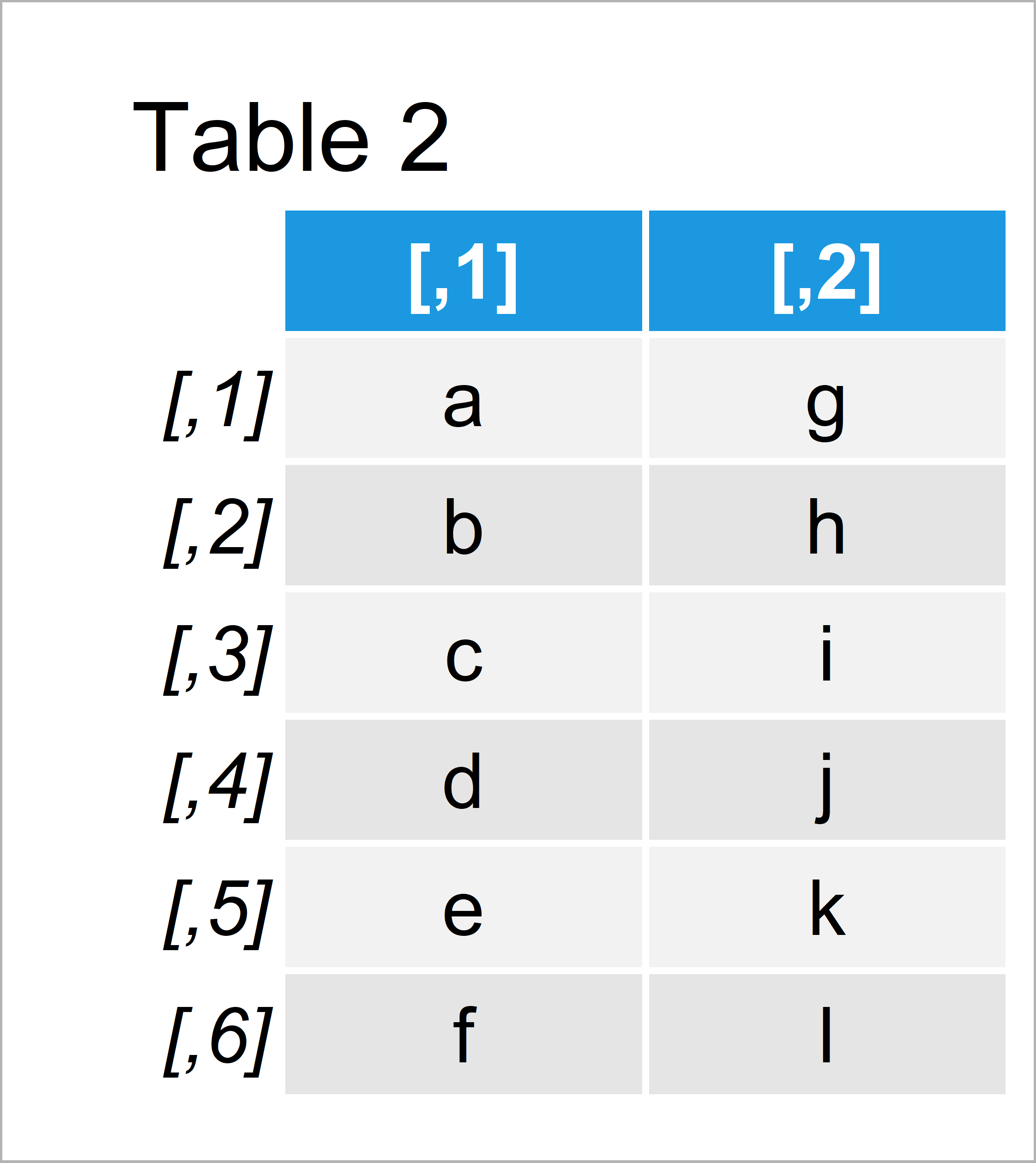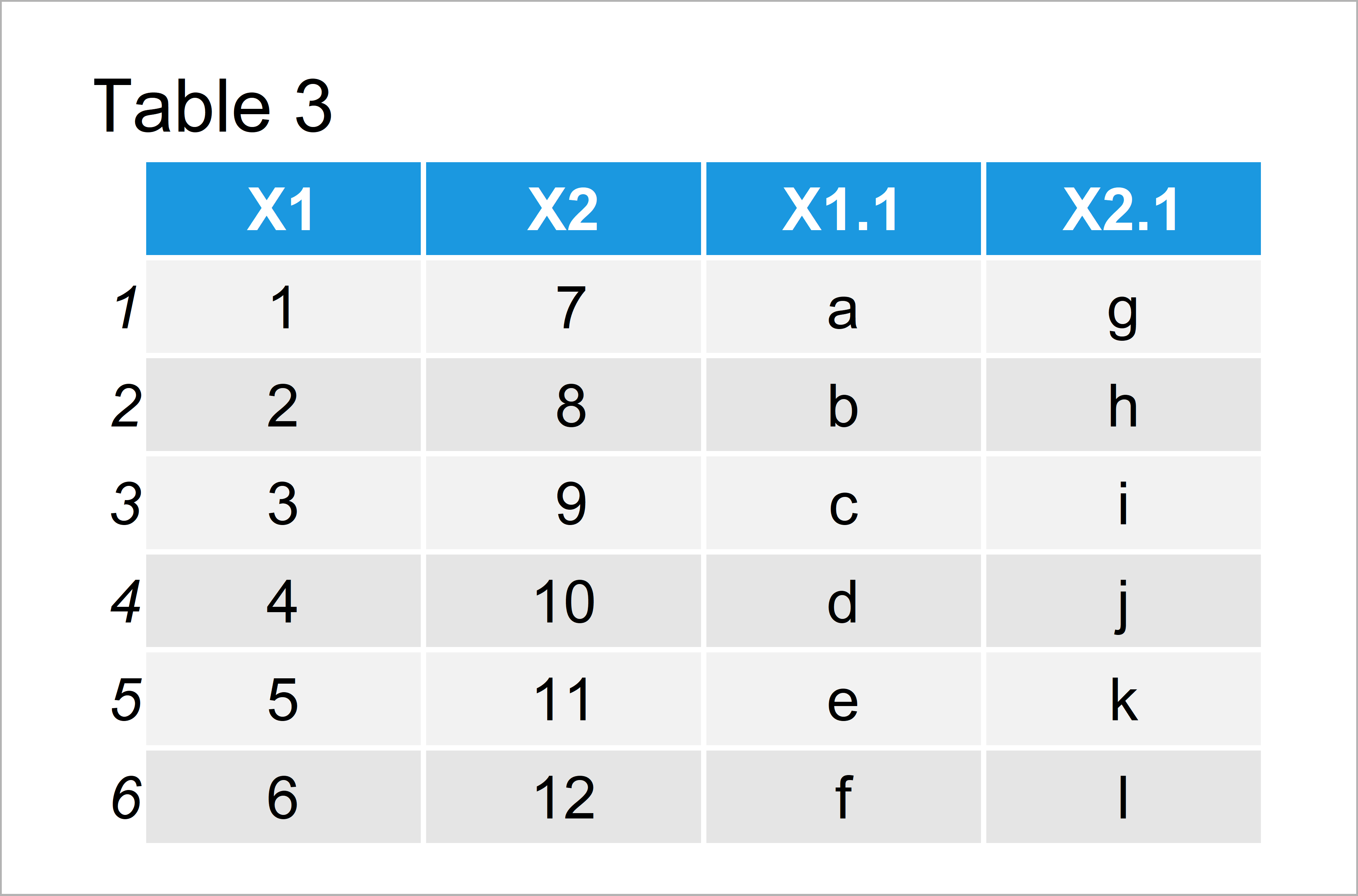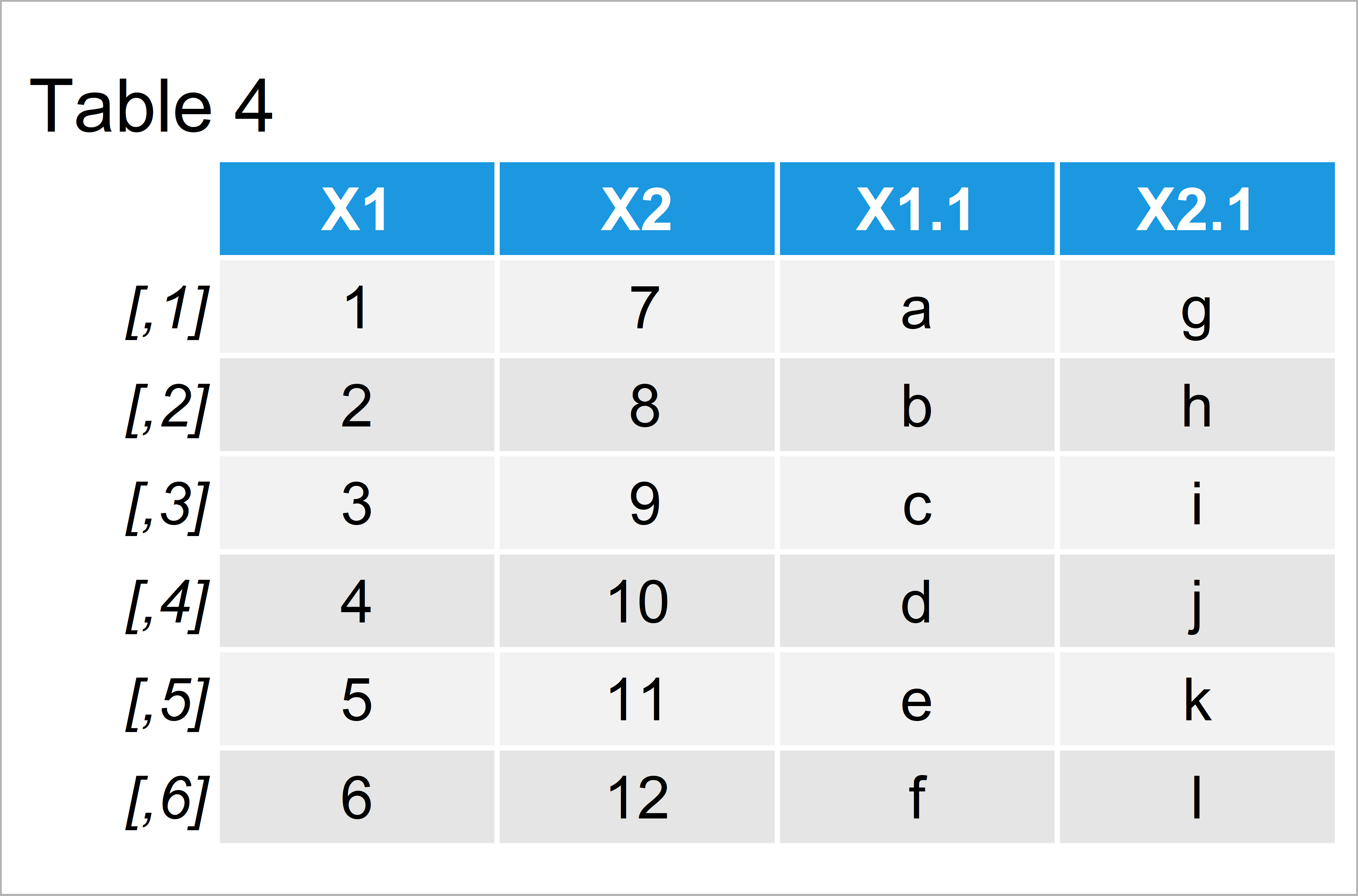Merge Two Matrices by Columns in R (2 Examples)
In this tutorial you’ll learn how to merge the columns of two matrices in R.
The tutorial will contain this:
Sound good? Let’s get started:
Exemplifying Data
We’ll use the following data as basement for this R programming language tutorial:
mat1 <- matrix(1:12, ncol = 2) # Create first example matrix mat1 # Print first matrix

Table 1 visualizes the output of the RStudio console and shows that our first example matrix has six rows and two columns.
Let’s create another matrix:
mat2 <- matrix(letters[1:12], ncol = 2) # Create second example matrix mat2 # Print second matrix

Table 2 shows the output of the previous R programming syntax – A second example matrix with six rows and two variables.
Example 1: Merge Two Matrices Using data.frame() Function
In Example 1, I’ll show how to join our two matrices using the data.frame function in R.
Have a look at the following R syntax:
merge1 <- data.frame(mat1, mat2) # Merge matrices using data.frame() merge1 # Print merged data frame

As shown in Table 3, we have created a data table containing the columns of our matrices mat1 and mat2.
Note that this data object has the data.frame class. Next; I’ll show how to convert this data frame back to the matrix class.
Example 2: Convert Merged Data Frame to Matrix Class Using as.matrix() Function
This example explains how to apply the as.matrix function to convert our data frame to the matrix data type:
merge2 <- as.matrix(merge1) # Convert merged data frame to matrix merge2 # Print merged matrix

As shown in Table 4, the previous R syntax has created a matrix consisting of our two input matrices mat1 and mat2.
Video & Further Resources
Would you like to learn more about joining matrices? Then you might watch the following video of my YouTube channel. In the video, I explain the content of this tutorial.
In addition, you might want to read the other posts of this website.
- Merge Two Lists in R
- Merge Two Unequal Data Frames & Replace NA with 0
- Merge Data Frames by Two ID Columns
- R Programming Tutorials
To summarize: In this tutorial you have learned how to join two matrix objects in the R programming language. Don’t hesitate to let me know in the comments section, if you have further questions.






